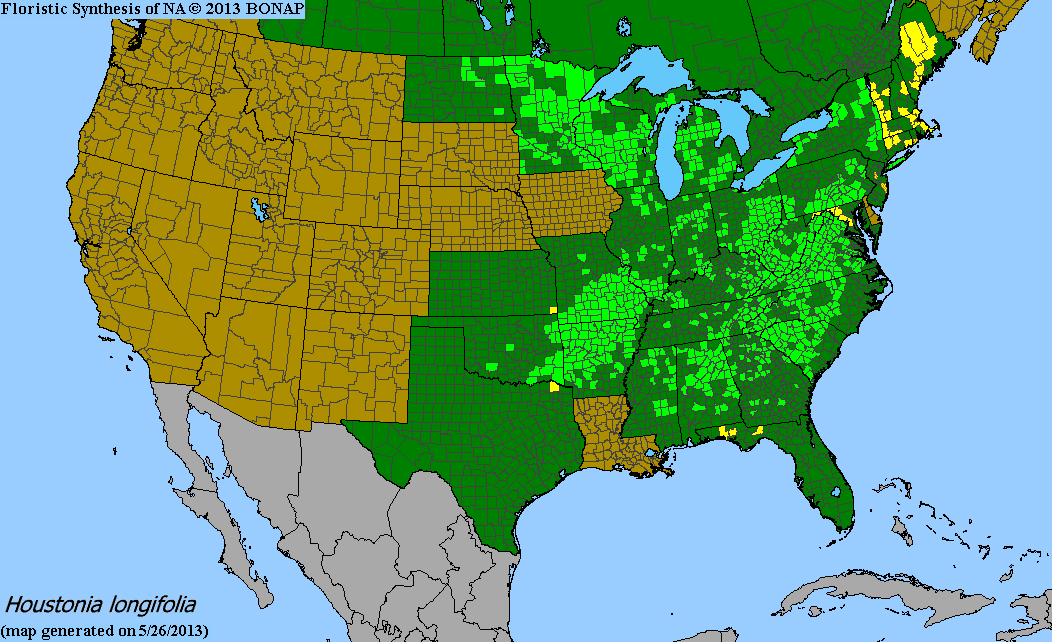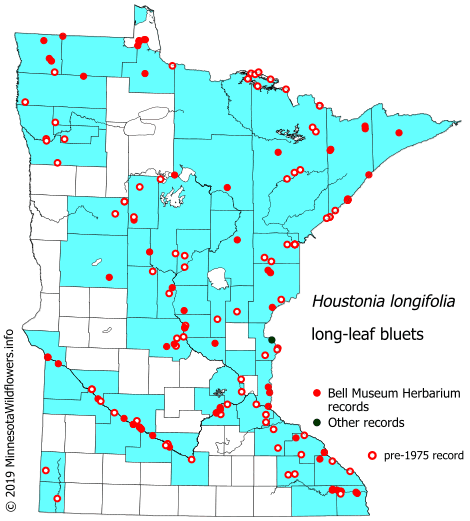Houstonia longifolia
Long-leaf bluets Description:
Houstonia longifolia, commonly known as long-leaved summer bluet, is a herbaceous perennial wildflower in the Rubiaceae family. It is native to eastern North America and can be found growing in a variety of habitats, including meadows, woods, and open rocky areas.
The plant typically grows to a height of 3 to 10 inches and has a sprawling habit, forming a mat of small, narrow leaves that are evergreen in some regions. In late spring to early summer, it produces clusters of delicate, four-petaled flowers that are typically pale blue, although they can also be white. The flowers are held above the foliage on slender stems and have a central yellow eye.
Houstonia longifolia is a hardy and adaptable plant that prefers well-drained soil and partial shade, although it can also tolerate full sun or deep shade. It is commonly used in rock gardens, cottage gardens, meadow gardens, and woodland gardens. In addition to its ornamental value, it is also valued for its ecological importance, as it provides habitat and food for a variety of pollinators, including bees and butterflies. It is also commonly used as a groundcover or edging plant. The plant is drought-tolerant once established and does not require much maintenance.
Native Range:
Long-leaf bluets are found across Minnesota and most of the Eastern United States.
Standard Plant Information:
Plant Height: 3" - 10" inches
Bloom Time: June - August
Preferred Habitat: Does well in part shade to full sun and moist to dry rocky or sandy soils. Often found in prairies, savannas, open woods, and rocky outcrops.
Sowing:
For most homeowners, the best option is to scatter seed on the ground by hand broadcasting at a minimum of 16-64 pls ounces per acre. For even coverage, we recommend that you broadcast seed in perpendicular rows across the site to ensure even coverage.
You’ll want to broadcast any grass seed first, which will get raked into the soil lightly. Next, it is ideal to mulch the area lightly with either a clean (no seed) straw or preferably with our native Little Bluestem straw, sold at our retail garden centers. After a light mulching is complete, now it’s time to broadcast your native wildflower seeds, which should not be raked into the soil. A good rain or watering is sufficient to cover the seed.
Planting:
Simply dig a hole in the soil slightly larger than the plant’s roots. Ensure that the soil line of the plant is maintained during the transfer (i.e. the plant should be at the same level with the ground as it was in the pot). Pack any loose dirt back around the plant and make sure you water it well the same day to ensure it has the best chance of survival.









